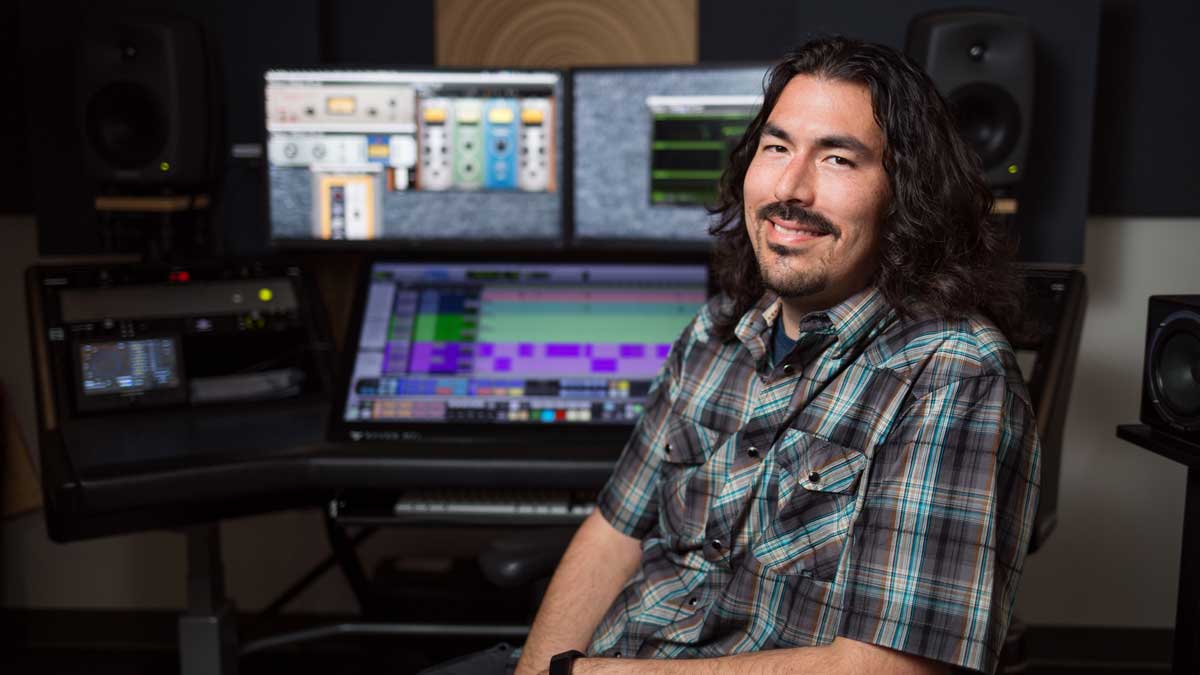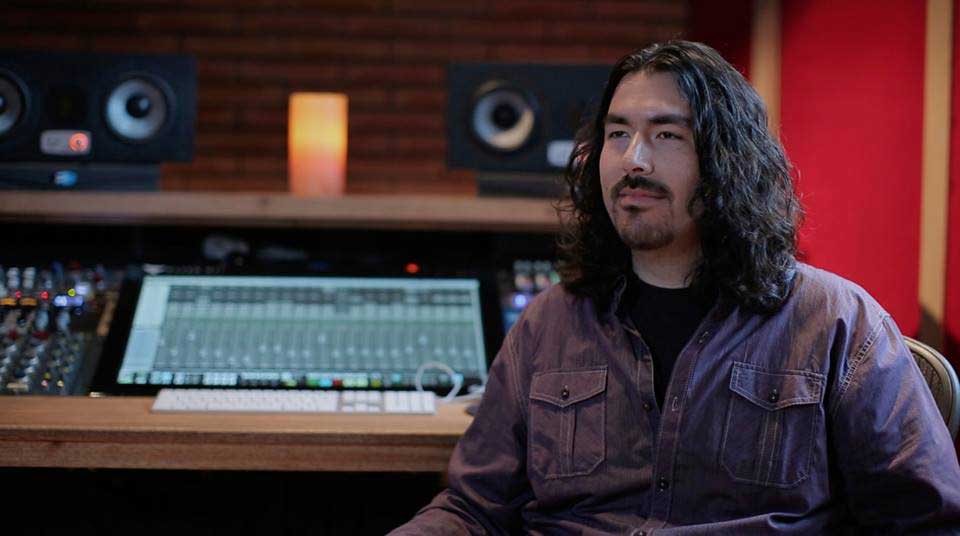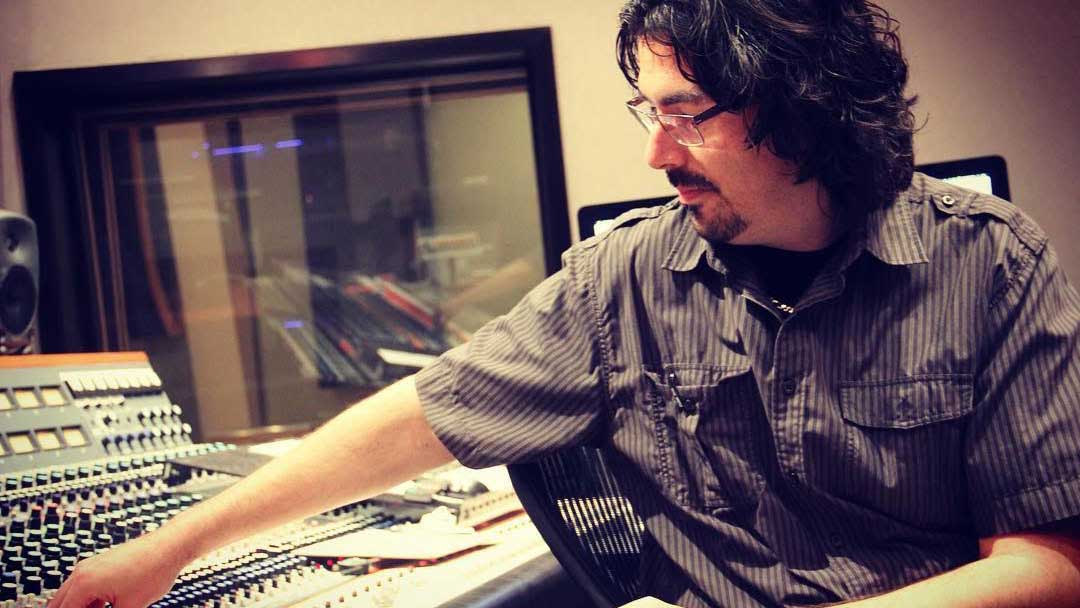Steve Vai engineer Greg Wurth's top tips for recording: "It’s about the purity of the sound, before the microphone even gets set up"
Tony MacAlpine, Tracii Guns, and Mary J Blige producer shares sound advice

As Steve Vai’s engineer for the past decade, Greg Wurth knows his way around getting optimal guitar sounds in the studio.
But when he shared his top tips with MusicRadar, he was clear about one thing up front: all the gear and flash in the world can’t compensate for lack of basic knowledge.
“There are no crazy tricks here,” he says. “Actually, people don’t always like getting my advice, because I recommend they go back to the fundamentals, but that’s really the answer to everything.”
Wurth grew up in San Diego, California, and early on became enamoured with the classic rock of The Beatles and Led Zeppelin, as well as the polished pop sounds of Michael Jackson. Entering his teen years, his tastes grew to include hard-rock bands like Rage Against The Machine, Tool and Deftones. He began playing guitar, but soon found that his passion was in recording the instrument rather than playing it.
Steve Vai always had people who were aspiring guitar players, and he doesn’t need that. He needs someone to help him with what he can’t do
“I love the guitar, but I found that, quite naturally, recording made sense to me,” he says. “I could visualise things in my mind and do them, kind of the way some songwriters write music in their sleep, wake up, and have a melody. My brain just worked well for engineering. Besides, I work with all these great guitarists - I can’t get up on a stage with anybody!”
After high school, he relocated to Los Angeles to study audio engineering. Through the school’s career placement program, he interned in studios, eventually meeting award-winning producer/engineer Neil Citron, who was producing Steve Vai at his Mothership studio and was in need of an assistant. Wurth got the job and eventually became Vai’s engineer.
The two have worked together on close to two dozen projects - singles, albums, digital releases, and remasters. “Our relationship has grown quite naturally, very organically,” he says.
Get the MusicRadar Newsletter
Want all the hottest music and gear news, reviews, deals, features and more, direct to your inbox? Sign up here.
“What’s different from what he had in the past is that I’m not a guitar player. I really care about engineering. So I guess I filled that void, because he always had people who were aspiring guitar players, and he doesn’t need that. He needs someone to help him with what he can’t do, and we’ve been able to team up in that way.”

Wurth’s discography includes a diverse range of artists ranging from Mary J. Blige to L.A. Guns, Tony MacAlpine, Indigenous, and 2Cellos. In addition to staying busy in the studio, he has an audio products company, which launched in 2016 with a 16-channel summing mixer, The Oracle. He manages and maintains a YouTube channel, Inside the Studio Workshop Series, and in 2017, he presented a 90-minute course via Lynda.com entitled Fundamentals of Pro Audio Equipment.
When MusicRadar spoke with Wurth, he was wrapping up another Vai project: a live album from Generation Axe, the all-star guitarist ensemble that Vai assembled with Tosin Abasi, Yngwie Malmsteen, Nuno Bettencourt, and Zakk Wylde.
“We recorded all the shows on their Asian tour, and since January we’ve been working on getting an album released,” he says. “Steve and I mixed it, it’s being mastered at Bernie Grundman’s, and they’re going on tour again, so there should be some commotion soon about the record.”
Here, then, are the producer's 7 for producers and guitarists…
1. It all starts with tone
“The number one starting point is always ‘tone comes from the fingers.’ If the person playing guitar doesn’t have a good tone, then they’ve failed out of the gate. So that’s first, although a lot of people ignore that or don’t realise it.”
2. Know your gear
“Understand how a microphone works. Choose the recording equipment the same way that you choose a guitar, amp, or pedal. Once you have those, and they sound good to your ear and in the room, then you’ve got to know how to pick a microphone and understand what a dynamic microphone will sound like, or a condenser, or a ribbon, and decide whether you want to use several microphones or just one.”
3. Let the music guide you
“Listen to the music. What does the music want? I might put a certain microphone on a guitar amp most of the time, but sometimes it might not cut through the track, so I have to change the mic or change the amp sound. I’m always listening for what the music calls for, because there’s never a one-stop shop for the signal chain.”
4. Less is always more
“Start with the minimal amount in your signal chain. A microphone into a good mic pre into the computer, or tape machine, or whatever you’re recording to. Don’t add anything unless you’re unable to get the sound you’re looking for and you can’t change it on the amp or guitar or pedal.
When you add things one by one, you can hear if it’s getting better or worse, and that way, also, if there is a problem, you have an easier way of troubleshooting it
“A lot of people like to start throwing mic pres, compressors, EQs, and all kinds of junk in the chain, but you need to start one by one and only add things if it’s needed, because you really hear the degradation. If you start with everything in your chain, you don’t hear what it sounds like without it.
“When you add things one by one, you can hear if it’s getting better or worse, and that way, also, if there is a problem, you have an easier way of troubleshooting it.
“When I record Steve Vai, we use a mic pre and microphones. We only use EQ if we feel like we’re missing something. We rarely use compression; we compress in the mix.
“It’s about the purity of the sound, and getting the correct sound before the microphone even gets set up. I’m not going to deny that it does get crazy, but we try to put the least amount of things on it, because we want a pure sound.”

5. Take risks
“Be creative and always be ready to change something. Don’t be afraid to move the microphone. Don’t be afraid to break the rules, once you know and respect the fundamentals, because breaking rules is where the cool stuff happens. But you can’t get to that unless you’re in control of what you’re doing.”
6. Don’t 'fix it in the mix'
“Know how to troubleshoot. If you hear buzz or noise, understand what your chain is, and make sure, before you hit record, that everything sounds the way it should.
“A lot of people rush all this stuff, and they’re quick to think that they can just fix it later, but if you troubleshoot and spend time getting the sound, you’ll be happy. And if you’re recording another artist, they perform better when they hear things properly. So I don’t subscribe to the thought of fixing anything later, unless that’s the absolute last-resort situation that you’re forced into.”
7. Go back to basics
“As much of a benefit as YouTube is, it’s also a hindrance on people’s education, because they use it as a fast-track and hinder their experience because they’re not learning fundamental things. They overlook them because they’re 'boring'.
“It’s not as interesting as learning about parallel compression and whatever else everybody’s into these days. I bought every engineering book I could find, read them, put Post-It notes in them to mark pages, made notes, and I went to engineering school. I cared about it, so I learned all the 'boring' stuff and I understood it. Do it the old-fashioned way: get a book, open it, and read it.”









